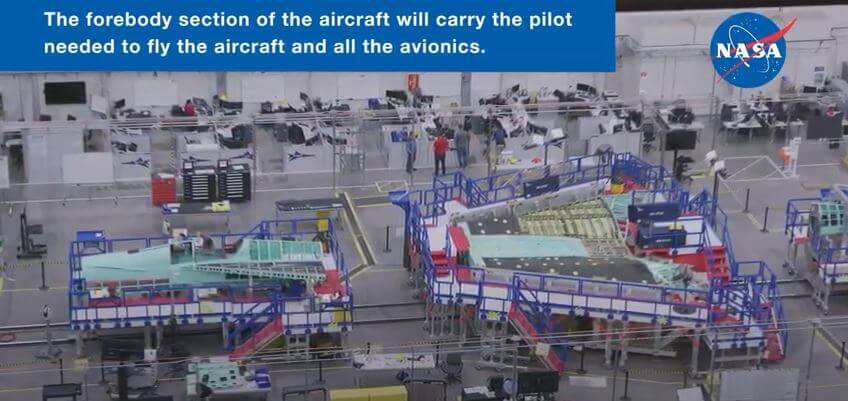Supersonics passenger jets
Airplane Χ-59: Only two mass-produced supersonic passenger aircraft are known to perform regular flights: the Soviet Tu-144, which made its first flight on December 31, 1968, and the first Anglo-French flight “Concorde” (French Concorde – “consent”) that transatlantic flights from 2003 to 2003. Their operation allowed not only to reduce flight time on long-distance flights significantly but also to use airspace without cargo at high altitudes (≈18 km).
When Concorde made its last flight in 2003, most people believed that the era of supersonic commercial flights was over for good. The high cost, the excessive noise, and the large aircraft size seemed like insurmountable obstacles for this sector.
The US space agency is building the X-59, a craft incorporating Quiet Supersonic Technology’s (QueSST) technology. It is a vessel that will move at Mach 1.4, which translates to about 1,500 km/h. The X-59 is intended for passenger use like the Concorde, but as the name suggests, its technology will produce minimal noise. NASA is working with Lockheed Martin to build the craft and has invested about $250 million.
X59 collaboration Lockheed Martin with Nasa
Lockheed Martin Aeronautics Company of Palmdale, California, recently began manufacturing the first part of NASA’s X-59 Quiet Supersonic Technology (QueSST) aircraft. When completed, NASA will use the X-59 to study how reducing the sonic boom heard from traditional supersonic jets to a quiet sonic “thump” could lead to acceptance of supersonic flight over land.
NASA aspires by the end of the tests to have reduced the crackle of sound decay, making it sound like a muffled thump. “The tests proved that not only have we designed a quiet supersonic aircraft, but we’ve also developed the right instruments to accurately measure the noise of future aircraft,” says John Wolter, head of the X-59’s science design team.
Description of X59 airplane
The aircraft’s fuselage contains the cockpit and helps define the shape of the X-59. Eventually, the 38-foot-long nose of the aircraft will be mounted to the fuselage.
Part of the cockpit is something you might see in an office. The pilot will see the sky ahead through a 4K computer monitor, displaying complex computer-processed imagery from two cameras mounted above and below the X-59’s nose. NASA calls this forward-facing “window” the eXternal Vision System or XVS. The XVS is an additional safety aid to help the pilot manoeuvre safely through the skies. This cutting-edge vision system is necessary because the desired shape and long nose of the X-59 won’t allow for a protruding cockpit canopy. The X-59’s unique shape controls how the air moves away from the plane, ultimately preventing a sonic boom from disturbing communities on the ground.
The most recognizable part of the airplane – the wing – was “the most complicated section and first section of the X-59 that was fabricated by Lockheed Martin,” explained Richwine. Housed within the 29.5-foot-wide wing are the aircraft’s fuel systems and a large portion of its control systems.

NASA is investing in air-breathing scramjet technology that could propel vehicles to supersonic speeds and potentially help power future Earth-orbiting spaceplanes.
How Scramjets Work
A ramjet operates by fuel combustion in a stream of air compressed by the aircraft’s forward speed, unlike a typical jet engine, where the compressor section (the fan blades) compresses the air. The airflow through a ramjet engine is subsonic, or less than the speed of sound. Ramjet-propelled vehicles operate from Mach 3 to Mach 6.
A scramjet (supersonic-combustion ramjet) is a ramjet engine in which the airflow through the engine remains supersonic or greater than the speed of sound. Scramjet-powered vehicles are envisioned to operate at speeds up to Mach 15. Ground tests of scramjet combustors have shown this potential, but no flight tests have surpassed the Mach 9.6 X-43A flight.
When completed, a pilot’s experimental aircraft will go through a series of tests to prove its performance. The X-59 will then fly over various US communities, collecting data on how the public responds to the quiet “sonic boom.” US and international regulators will use the data to change the rules potentially



